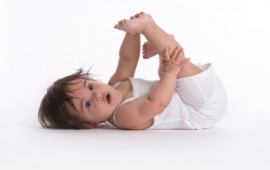Swaddling: Hidden Cause of Infant Hip Dysplasia
Author: Shannon Miller Lifestyle

Hip dysplasia means that the bones of the hip joint are not aligned correctly.
Hip dysplasia affects thousands of children and adults each year:
- prevents the hip joint from functioning properly
- the joint wears out much faster than normal
- pain is not normally felt until much later stages, making it harder to detect.
Dr. Charles Price, pediatric orthopedist at the Winnie and Arnold Palmer Hospital for Children and director of the International Hip Dysplasia Institute, notes that, “Swaddling an infant has many positive effects such as calming a crying baby and soothing pain in infants. Unfortunately many parents are taught to swaddle the baby’s entire body to create a tight cocoon, and this restriction of movement in the lower half of the body can lead to post-natal hip dysplasia.”
In most cases hip dysplasia is found at a newborn examination by the doctor. However, in some cases it can develop later on in children. It occurs because the top of the femur (leg bone) is not properly located or is loose in the hip socket. Because it is hard to detect, it is often labeled as a “silent” condition.
With early diagnosis and proper care, this condition can usually be treated and reversed.
In many cultures around the world tight swaddling method is considered very normal, but done improperly can be associated with hip dysplasia. Detecting and treating this condition in the early stages can prevent the onset of adult arthritis of the hips and a hip replacement at a young age.
Here are a few healthy swaddling tips from Dr. Price to help avoid hip dysplasia:
- If using a blanket, wrap firmly around the arms but loosely around the legs so the hips can move freely.
- When swaddling baby, avoid stretching the legs our straight or pressing them together.
- Encourage baby’s hips to be spread and bent as if riding on a horse. (When carrying baby, wrap his legs around your body for proper hip development.)
- Consider using a “sleepsack” product with a roomy bottom such as the Halo SleepSack Swaddle which is a fool proof way to swaddle baby in a hip healthy manner.
Some signs of Infant Hip Dysplasia that parents may notice are:
- Hip clicks or pops
- Limited range of motion
- Pain-although usually not present
- Swayback
For a definitive diagnosis, an ultra-sound or ex-ray is recommended.
For more information visit: hipdysplasia.org
